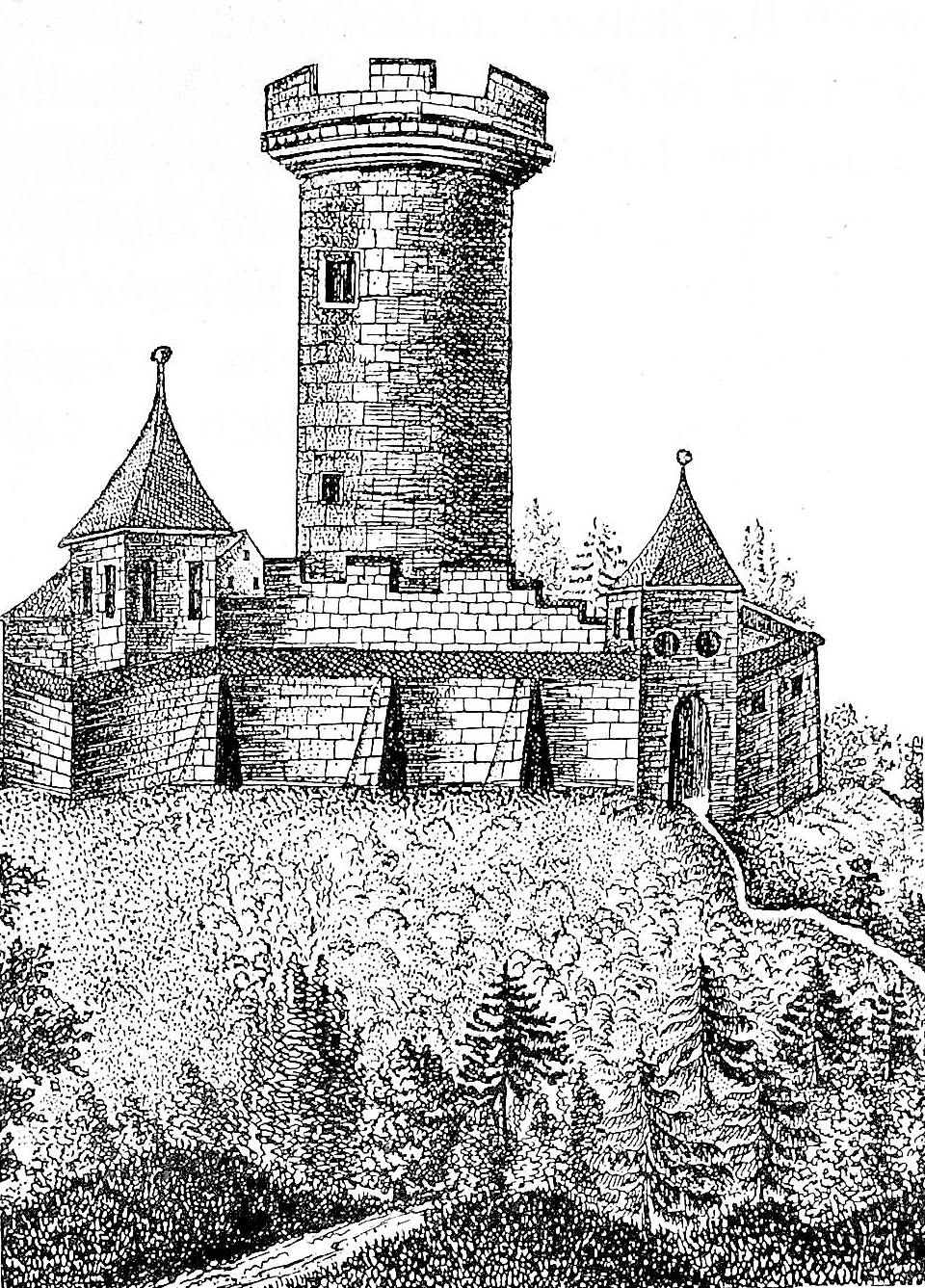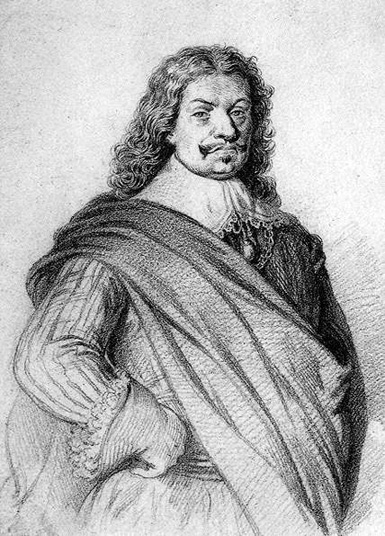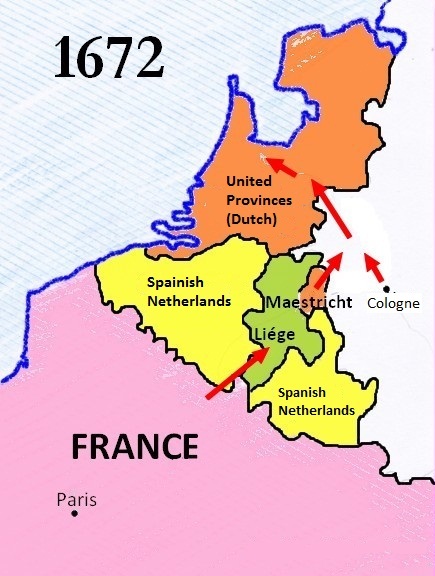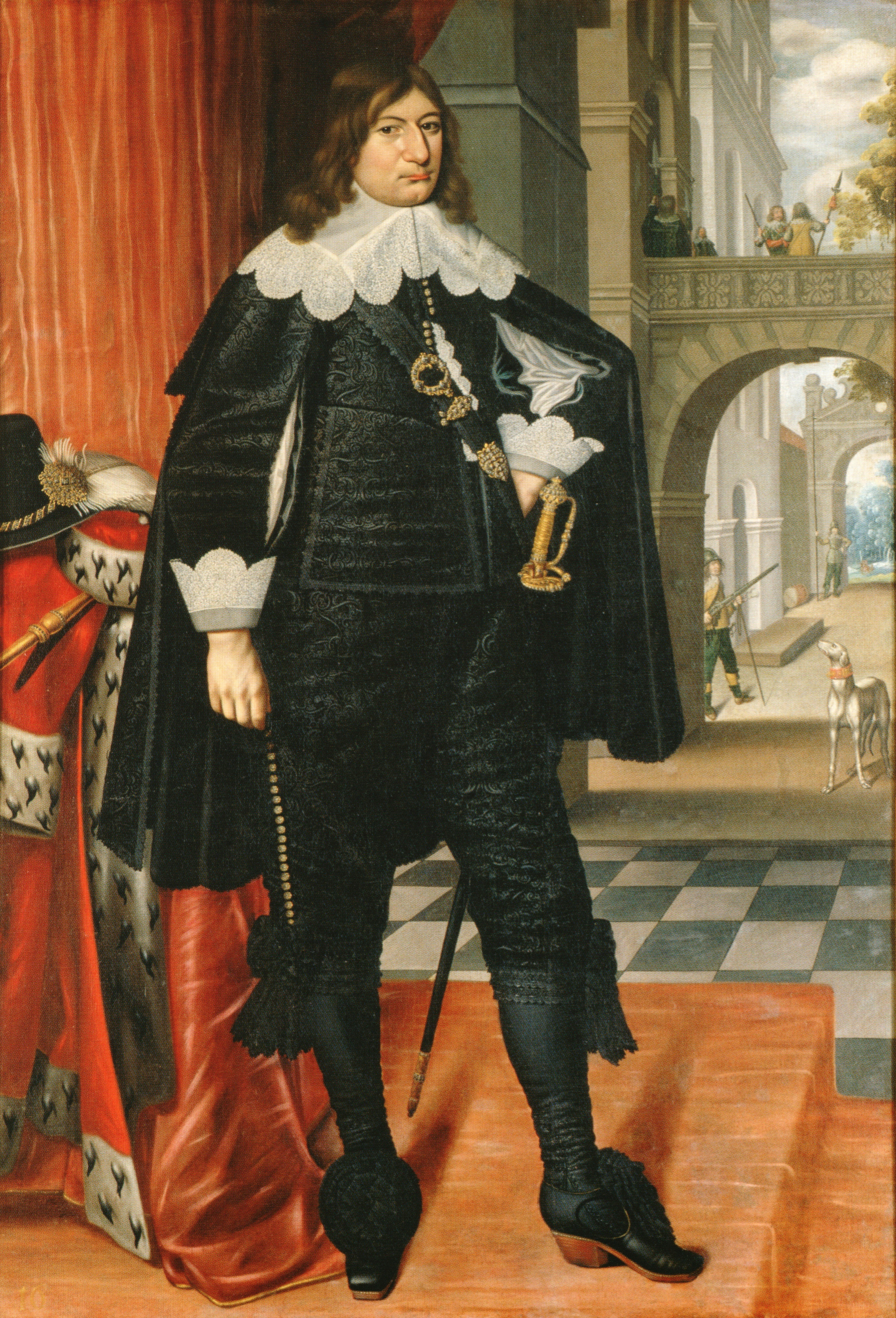|
Hermann, Markgraf Von Baden-Baden
Margrave (Prince) Hermann of Baden-Baden (12 October 1628 in Baden-Baden; died 30 October 1691 in Regensburg) was a general and diplomat in the imperial service. He was Field Marshal, president of the Hofkriegsrat, and the representative of the Emperor in the Perpetual Diet of Regensburg. Early life He was the fifth son of Margrave William of Baden-Baden and his wife, Catherine Ursula of Hohenzollern-Hechingen. He was destined for an ecclesiastical career and was appointed canon in Cologne and Paderborn. He also held seats in the cathedral chapter (religion)s of Strasbourg, Salzburg and Augsburg. He was raised as a Catholic and attended the ''Collegium St. Hieronymi'' in Dillingen. He tried in vain to join the Order of Saint John. Around 1660, he was considered a possible successor to King John II Casimir Vasa of Poland. For this reason, he gave up his seats in the cathedral chapters in 1661. When he was not elected King of Poland, he turned to a military care ... [...More Info...] [...Related Items...] OR: [Wikipedia] [Google] [Baidu] |
House Of Zähringen
The House of Zähringen (german: Zähringer) was a dynasty of Swabian nobility. The family's name derived from Zähringen Castle near Freiburg im Breisgau. The Zähringer in the 12th century used the title of Duke of Zähringen, in compensation for having conceded the title of Duke of Swabia to the Staufer in 1098. The Zähringer were granted the special title of Rector of Burgundy in 1127, and they continued to use both titles until the extinction of the ducal line in 1218. The territories and fiefs held by the Zähringer were known as the 'Duchy of Zähringen' (), but it was not seen as a duchy in equal standing with the old stem duchies. The Zähringer attempted to expand their territories in Swabia and Burgundy into a fully recognized duchy, but their expansion was halted in the 1130s due to their feud with the Welfs. Pursuing their territorial ambitions, the Zähringer founded numerous cities and monasteries on either side of the Black Forest, as well as in the western S ... [...More Info...] [...Related Items...] OR: [Wikipedia] [Google] [Baidu] |
John II Casimir Vasa
John II Casimir ( pl, Jan II Kazimierz Waza; lt, Jonas Kazimieras Vaza; 22 March 1609 – 16 December 1672) was King of Poland and Grand Duke of Lithuania from 1648 until his abdication in 1668 as well as titular King of Sweden from 1648 until 1660. He was the first son of Sigismund III Vasa with his second wife Constance of Austria. John Casimir succeeded his older half-brother, Władysław IV Vasa. As a prince, John Casimir embarked at Genoa for Spain in 1638 to negotiate a league with Philip IV against France, but was captured by Cardinal Richelieu and imprisoned at Vincennes where he remained for two years. He was released when his brother, Władysław IV, promised never to wage war against France. John Casimir then travelled extensively throughout western Europe and entered the order of Jesuits in Rome in 1643. He was made cardinal by Innocent X, however, after returning to Poland, he became a layman and succeeded his brother in 1648. His reign commenced amid the con ... [...More Info...] [...Related Items...] OR: [Wikipedia] [Google] [Baidu] |
Alexander Von Bournonville
Alexander von Bournonville, Alexander de Bournonville, Alexander II Hyppolite, Prince of Bournonville and third Count of Hénin-Liétard (Brussels, 5 January 1616 – Pamplona, 20 August 1690) was a Flemish military man. He held the titles of Field Marshal of the Holy Roman Empire, Knight of the Order of the Golden Fleece, Viceroy of Catalonia (1678–1685) and Viceroy of Navarre (1686–1691). He was the son of Alexander I de Bournonville, count of Henin, Order of the Golden Fleece (1585–1656) and Anne de Melun (1590–1666). He married with María Ernestina of Arenberg, daughter of Philippe-Charles, 3rd Count of Arenberg and had 3 daughters and a son Alexander III de Bournonville (1662–1705), his successor. He fought for the Holy Roman Empire in the Thirty Years' War and then for Spain in the Franco-Spanish War (1635–1659), where he distinguished himself in the Battle of Arras (1654) and the Battle of Valenciennes (1656). He was awarded on 12 July 1658, in Madrid, by ... [...More Info...] [...Related Items...] OR: [Wikipedia] [Google] [Baidu] |
Feldzeugmeister
''Feldzeugmeister'' was a historical military rank in some German and the Austro-Hungarian armies, especially in use for the artillery. It was commonly used in the 16th or 17th century, but could even be found at the beginning of the 20th century in some European countries. In the army of Habsburg Empire, the rank of Feldzeugmeister was an equivalent of lieutenant general. Etymology The German term ''Feldzeugmeister'' literally translates as "ordnance master" or "gun master". (''Feld-'' means battlefield, as used in the German title for field marshal (''Feldmarschall''), and ''-zeug-'' refers to the guns used by the artillery.) In French, the equivalent expression was , used since the days of Philip VI of France (). Military rank Originally, the ranks above ''Feldzeugmeister'' were ''Feldhauptmann'' and ''Feldmarschall''. The third most important person in the army was the ''Feldzeugmeister''. Although the expression was common in the German artillery, Austrian, Hungarian and ... [...More Info...] [...Related Items...] OR: [Wikipedia] [Google] [Baidu] |
Raimondo Montecuccoli
Raimondo Montecuccoli (; 21 February 1609 – 16 October 1680) was an Italian-born professional soldier, military theorist, and diplomat, who served the Habsburg monarchy. Experiencing the Thirty Years' War from scratch as a simple footsoldier, he rose through the ranks into a regiment holder and became an important cavalry commander in the late stages. Serving the Habsburgs as war counsellor and envoy, he commanded their troops in the Second Northern War and the Austro-Turkish War of 1663–64 where he scored an impressive victory in the Battle of Saint Gotthard. Afterwards, he became president of the Hofkriegsrat and briefly returned as supreme commander of the Imperial forces during the Franco-Dutch War. Montecuccoli was considered the only commander able to compete with the French general Turenne, (1611–1675), and like him, was closely associated with the post-1648 development of linear infantry tactics. Early life Montecuccoli was born on 21 February 1609 in the Cast ... [...More Info...] [...Related Items...] OR: [Wikipedia] [Google] [Baidu] |
Holy Roman Empire
The Holy Roman Empire was a Polity, political entity in Western Europe, Western, Central Europe, Central, and Southern Europe that developed during the Early Middle Ages and continued until its Dissolution of the Holy Roman Empire, dissolution in 1806 during the Napoleonic Wars. From the accession of Otto I in 962 until the twelfth century, the Empire was the most powerful monarchy in Europe. Andrew Holt characterizes it as "perhaps the most powerful European state of the Middle Ages". The functioning of government depended on the harmonic cooperation (dubbed ''consensual rulership'' by Bernd Schneidmüller) between monarch and vassals but this harmony was disturbed during the Salian Dynasty, Salian period. The empire reached the apex of territorial expansion and power under the House of Hohenstaufen in the mid-thirteenth century, but overextending led to partial collapse. On 25 December 800, Pope Leo III crowned the List of Frankish kings, Frankish king Charlemagne as Carolingi ... [...More Info...] [...Related Items...] OR: [Wikipedia] [Google] [Baidu] |
Sweden
Sweden, formally the Kingdom of Sweden,The United Nations Group of Experts on Geographical Names states that the country's formal name is the Kingdom of SwedenUNGEGN World Geographical Names, Sweden./ref> is a Nordic country located on the Scandinavian Peninsula in Northern Europe. It borders Norway to the west and north, Finland to the east, and is connected to Denmark in the southwest by a bridgetunnel across the Öresund. At , Sweden is the largest Nordic country, the third-largest country in the European Union, and the fifth-largest country in Europe. The capital and largest city is Stockholm. Sweden has a total population of 10.5 million, and a low population density of , with around 87% of Swedes residing in urban areas in the central and southern half of the country. Sweden has a nature dominated by forests and a large amount of lakes, including some of the largest in Europe. Many long rivers run from the Scandes range through the landscape, primarily ... [...More Info...] [...Related Items...] OR: [Wikipedia] [Google] [Baidu] |
Franco-Dutch War
The Franco-Dutch War, also known as the Dutch War (french: Guerre de Hollande; nl, Hollandse Oorlog), was fought between France and the Dutch Republic, supported by its allies the Holy Roman Empire, Spain, Brandenburg-Prussia and Denmark-Norway. In its early stages, France was allied with Münster and Cologne, as well as England. The 1672 to 1674 Third Anglo-Dutch War and 1675 to 1679 Scanian War are considered related conflicts. The war began in May 1672 when France nearly overran the Dutch Republic, an event still known as the ''Rampjaar'' or "Disaster Year". Their advance was halted by the Dutch Water Line in June and by late July the Dutch position had stabilised. Concern over French gains led to a formal alliance in August 1673 between the Dutch, Emperor Leopold I, Spain and Brandenburg-Prussia. They were joined by Lorraine and Denmark, while England made peace in February 1674. Now facing a war on multiple fronts, the French withdrew from the Dutch Republic, retaining ... [...More Info...] [...Related Items...] OR: [Wikipedia] [Google] [Baidu] |
Arolsen Klebeband 01 292
Bad Arolsen (, until 1997 Arolsen, ''Bad'' being the German name for ''Spa'') is a small town in northern Hesse, Germany, in Waldeck-Frankenberg district. From 1655 until 1918 it served as the residence town of the Princes of Waldeck-Pyrmont and then until 1929 as the capital of the Waldeck Free State. The International Tracing Service has its headquarters in Bad Arolsen. In 2003, the town hosted the 43rd Hessentag state festival. Geography Location Bad Arolsen is situated roughly 45 km west of Kassel. The German-Dutch holiday road called the Orange Route runs through the town, joining towns, cities and regions associated with the House of Orange. Neighbouring communities Bad Arolsen neighbours are: the town of Diemelstadt to the north, the town of Volkmarsen (both belonging to the county of Waldeck-Frankenberg); the town of Wolfhagen in the southeast (Kassel district); the town of Waldeck to the south, the community of Twistetal to the southwest; the community of D ... [...More Info...] [...Related Items...] OR: [Wikipedia] [Google] [Baidu] |
Frederick William, Elector Of Brandenburg
Frederick William (german: Friedrich Wilhelm; 16 February 1620 – 29 April 1688) was Elector of Brandenburg and Duke of Prussia, thus ruler of Brandenburg-Prussia, from 1640 until his death in 1688. A member of the House of Hohenzollern, he is popularly known as "the Great Elector" (') because of his military and political achievements. Frederick William was a staunch pillar of the Calvinist faith, associated with the rising commercial class. He saw the importance of trade and promoted it vigorously. His shrewd domestic reforms gave Prussia a strong position in the post-Westphalian political order of north-central Europe, setting Prussia up for elevation from duchy to kingdom, achieved under his son and successor. Biography Elector Frederick William was born in Berlin to George William, Elector of Brandenburg, and Elisabeth Charlotte of the Palatinate. His inheritance consisted of the Margraviate of Brandenburg, the Duchy of Cleves, the County of Mark, and the Duchy of Pru ... [...More Info...] [...Related Items...] OR: [Wikipedia] [Google] [Baidu] |
Berlin
Berlin ( , ) is the capital and largest city of Germany by both area and population. Its 3.7 million inhabitants make it the European Union's most populous city, according to population within city limits. One of Germany's sixteen constituent states, Berlin is surrounded by the State of Brandenburg and contiguous with Potsdam, Brandenburg's capital. Berlin's urban area, which has a population of around 4.5 million, is the second most populous urban area in Germany after the Ruhr. The Berlin-Brandenburg capital region has around 6.2 million inhabitants and is Germany's third-largest metropolitan region after the Rhine-Ruhr and Rhine-Main regions. Berlin straddles the banks of the Spree, which flows into the Havel (a tributary of the Elbe) in the western borough of Spandau. Among the city's main topographical features are the many lakes in the western and southeastern boroughs formed by the Spree, Havel and Dahme, the largest of which is Lake Müggelsee. Due to its l ... [...More Info...] [...Related Items...] OR: [Wikipedia] [Google] [Baidu] |
War Of Devolution
In the 1667 to 1668 War of Devolution (, ), France occupied large parts of the Spanish Netherlands and Franche-Comté, both then provinces of the Holy Roman Empire (and properties of the King of Spain). The name derives from an obscure law known as the ''Jus Devolutionis'', used by Louis XIV of France to claim that these territories had "devolved" to him by right of marriage to Maria Theresa of Spain. In the fighting, the French encountered minimal resistance; however, Louis was more concerned with asserting his inheritance rights in the Spanish Empire, and consequently returned much of his gains in the May 1668 Treaty of Aix-la-Chapelle. The terms were agreed by Emperor Leopold I in January 1668, reinforced by the Triple Alliance of England, Sweden and the Dutch Republic. The conflict marked the end of the long-standing Franco-Dutch alliance, and was the first of the French wars of expansion that dominated Europe for the next 50 years. Background As part of the 1659 Treaty o ... [...More Info...] [...Related Items...] OR: [Wikipedia] [Google] [Baidu] |










